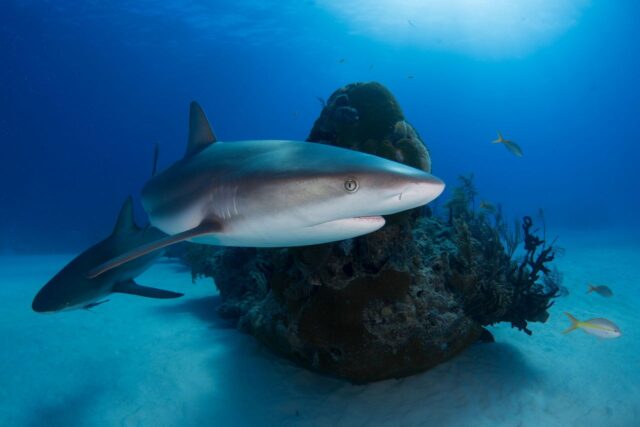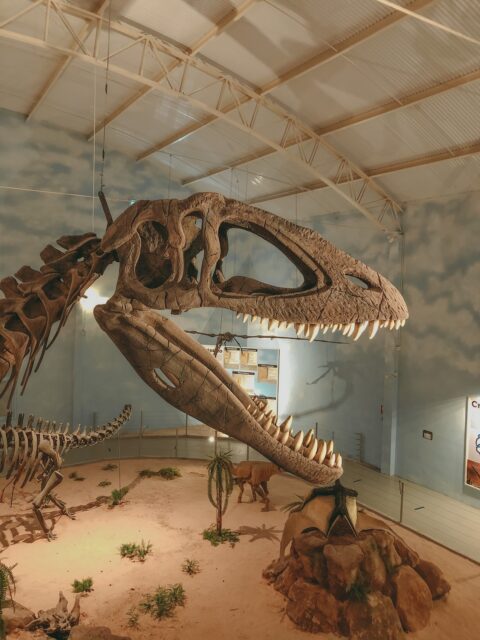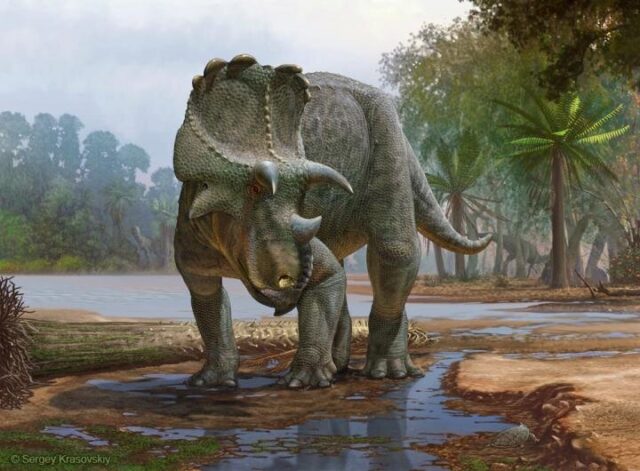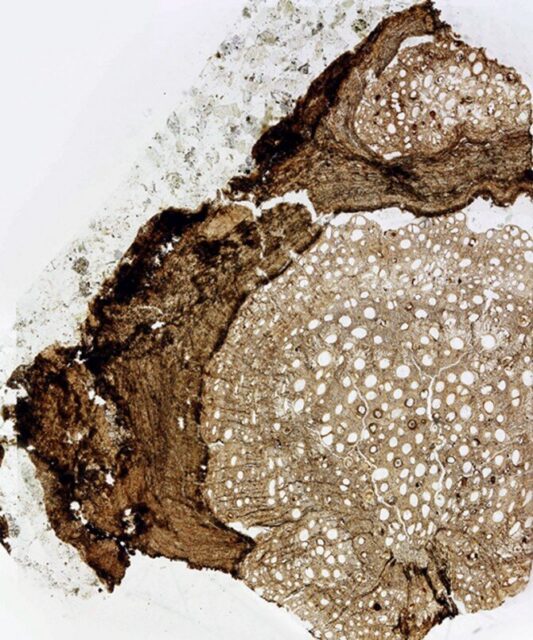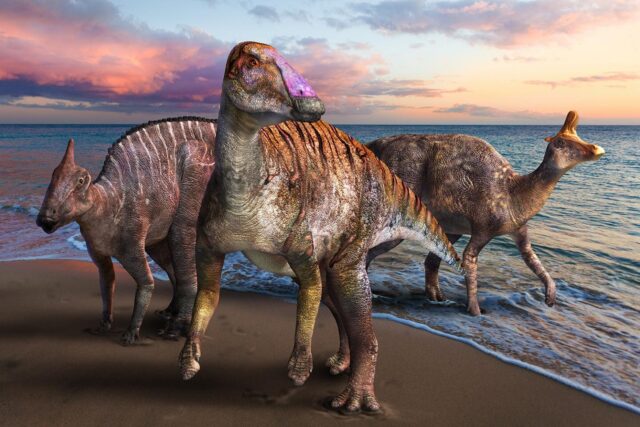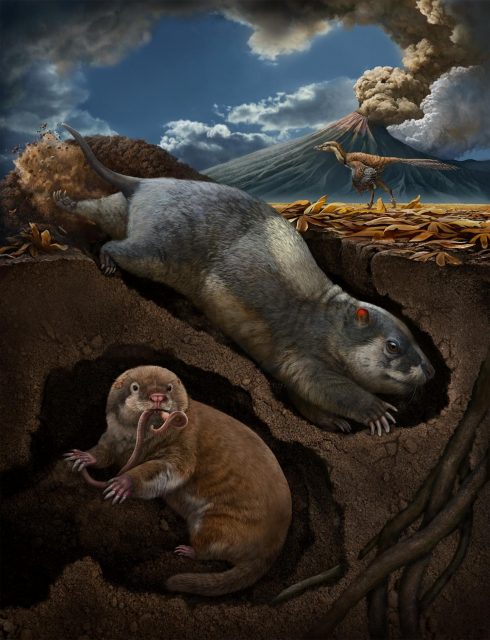A more reliable way of estimating the size of megalodon shows the extinct shark may have been bigger than previously thought, measuring up to 65 feet, nearly the length of two school buses. Earlier studies had ball-parked the massive...
The new dinosaur species, Tlatolophus galorum is herbivorous dinosaur from 73 million years ago that emitted strong sounds. Excavations in Mexico reveal an intact fossil of a so-called peaceful but talkative dinosaur. The animal crest's shape looks like "a...
A newly described horned dinosaur that lived in New Mexico 82 million years ago is one of the earliest known ceratopsid species, a group known as horned or frilled dinosaurs. Researchers reported their find in a publication in the...
An 18.5 million-year-old fossil found in Panama provides evidence of a new species and is the oldest reliable example of a climbing woody vine known as a liana from the soapberry family. The discovery sheds light on the evolution...
An international team of paleontologists has identified a new genus and species of hadrosaur or duck-billed dinosaur, Yamatosaurus izanagii, on one of Japan's southern islands.
The fossilized discovery yields new information about hadrosaur migration, suggesting that the herbivors migrated from...
A study led by scientists at the American Museum of Natural History has resolved a long-standing controversy about an extinct "horned" crocodile that likely lived among humans in Madagascar. Based on ancient DNA, the research shows that the horned...
The fearsome tyrannosaur dinosaurs that ruled the northern hemisphere during the Late Cretaceous period (66-100 million years ago) may not have been solitary predators as popularly envisioned, but social carnivores similar to wolves, according to a new study.
The finding,...
Humans and animals have a preferred walking speed. This is, in part, influenced by the amount of energy required: they prefer to walk at the speed at which they use the lowest possible amount of energy. One of the...
The first photosynthetic oxygen-producing organisms on Earth were cyanobacteria. Their evolution dramatically changed the Earth allowing oxygen to accumulate into the atmosphere for the first time and further allowing the evolution of oxygen-utilizing organisms including eukaryotes. Eukaryotes include animals,...
A single footprint left by a cat-sized dinosaur around 100 million years ago has been discovered in China by an international team of palaeontologists.
University of Queensland researcher Dr Anthony Romilio was part of the team that investigated the track,...
Paleontologists have discovered two new species of mammal-like, burrowing animals that lived about 120 million years ago in what is now northeastern China. The new species, described today in the journal Nature, are distantly related but independently evolved traits to...





